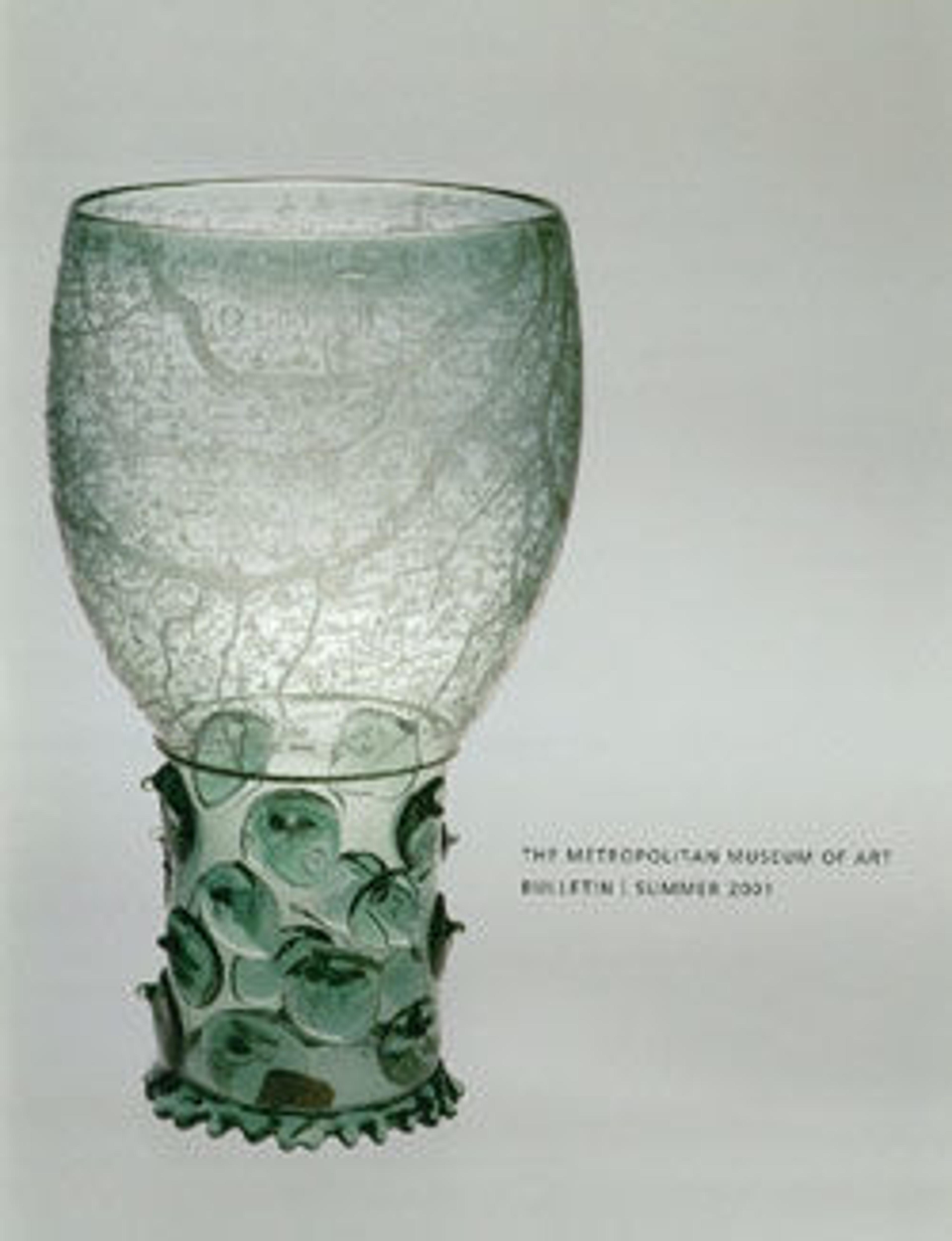Furniture ornaments
These nine square blue glass plaques with six-petal rosettes were found at Arslan Tash, together with a large group of carved ivory furniture inlays. The glass plaques were probably also used to decorate luxurious furniture made of wood, ivory, or a combination of both. Each blue square is decorated with a white six-petal rosette, mounted into a reddish glass setting now oxidized to green, and framed by a corroded copper-alloy frame. Some of the white petals penetrate the blue squares and are visible on both sides, suggesting that the white petals may have been fused within the blue glass, perhaps in a manufacturing technique known as fused-mosaic glass. In this method of glass-working, threads of glass of contrasting colors are fused together to produce a long cane with a design in cross-section that is then stretched and sliced crosswise. The production of these pieces probably involved Phoenician craftsmen who were expert at inlaying colored glass into carved ivories. Several other small glass ornaments with rosettes, found at the Neo-Assyrian capital of Nimrud, are also in the Metropolitan Museum’s collection (58.31.43;58.31.44;62.269.15a-d).
Arslan Tash, ancient Hadatu, was an Aramaean town located in northern Syria just east of the Euphrates River, close to the modern Turkish border. French archaeological excavations at the site in 1928 revealed city walls and gates in addition to a palace and temple that were built when the Neo-Assyrian king Tiglath-Pileser III (744-721 B.C.) turned the town into a provincial capital and military outpost. During the excavations, over one hundred ivory furniture inlays were found in a building near the palace. Gold foil, paint, and semiprecious stone and glass inlay embellishments enlivened these magnificent works of art. Today, the ivories and decorative elements from Arslan Tash are housed in museums in Paris, Aleppo, Jerusalem, Karlsruhe, and Hamburg, as well as The Metropolitan Museum of Art.
Arslan Tash, ancient Hadatu, was an Aramaean town located in northern Syria just east of the Euphrates River, close to the modern Turkish border. French archaeological excavations at the site in 1928 revealed city walls and gates in addition to a palace and temple that were built when the Neo-Assyrian king Tiglath-Pileser III (744-721 B.C.) turned the town into a provincial capital and military outpost. During the excavations, over one hundred ivory furniture inlays were found in a building near the palace. Gold foil, paint, and semiprecious stone and glass inlay embellishments enlivened these magnificent works of art. Today, the ivories and decorative elements from Arslan Tash are housed in museums in Paris, Aleppo, Jerusalem, Karlsruhe, and Hamburg, as well as The Metropolitan Museum of Art.
Artwork Details
- Title: Furniture ornaments
- Period: Neo-Assyrian
- Date: ca. 9th–8th century BCE
- Geography: Syria, probably from Arslan Tash (ancient Hadatu)
- Culture: Assyrian
- Medium: Glass, bronze
- Dimensions: 0.75 x 0.75 in. (1.91 x 1.91 cm)
- Credit Line: Fletcher Fund, 1957
- Object Number: 57.80.18a–i
- Curatorial Department: Ancient West Asian Art
More Artwork
Research Resources
The Met provides unparalleled resources for research and welcomes an international community of students and scholars. The Met's Open Access API is where creators and researchers can connect to the The Met collection. Open Access data and public domain images are available for unrestricted commercial and noncommercial use without permission or fee.
To request images under copyright and other restrictions, please use this Image Request form.
Feedback
We continue to research and examine historical and cultural context for objects in The Met collection. If you have comments or questions about this object record, please contact us using the form below. The Museum looks forward to receiving your comments.
